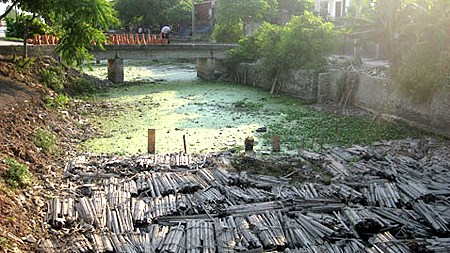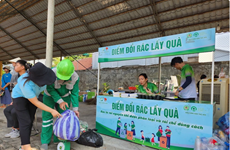Time to think seriously of rural pollution
 Illustrative image (Source: baochinhphu.vn)
Illustrative image (Source: baochinhphu.vn)Decades after opening its door to the world, rural Vietnam has undergone considerable transformations, but an unintended side effect has been environmental deterioration at an alarming pace, according to environmental officials.
Rural residents, who currently accounts for around 67 percent of the country’s total, are producing 13 million tonnes of garbage, 1.3 billion cubic metres of waste water and around 7,500 tonnes of empty bags of pesticides each year, most of which have not been collected or treated properly.
Most of the environmental pressure in rural areas comes from production activities like cultivation, farming, husbandry, seafood and agro-product processing, the development of craft villages and industrial areas.
According to the 2014 environmental report by the Ministry of Natural Resources and Environment, rural areas have shifted towards the industry and service sectors, boosting demand for clean water but also producing more solid and liquid waste.
A report from the Department of Crop Production under the Ministry of Agriculture and Rural Development, showed that seven main crops – rice, corn, sweet potato, peanut, soybean, cassava and sugarcane – produce 84.5 million tonnes of waste yearly.
Nguyen Thuong Hien, Head of the Department of Waste Management and Environmental Improvement, said craft villages are also putting considerable pressure on the environment with the release of between 300 and 500 tonnes of waste and 15,000 cubic metres of sewage.
Compounding this, the rural environment is suffering from the effects of climate change with rising sea levels and natural disasters.
Poor planning and management and out-of-date technologies used by family-run enterprises are other obstacles to the efforts to reduce rural pollution.
The increasing use of underground water for daily use and production could potentially lead to disasters like the depletion of underground water, the sinking of soil and the increasing risk of polluting underground water.
Nguyen Van Tai, Head of the Department of the Environment, said policies and laws on rural environment protection need to be examined and revised and sets of criteria on environmental protection should be designed to suit the realities.
Besides improving the local management capability, it is necessary to raise local awareness and engagement in the cause, he added.
According to the Vietnam Union of Cooperatives, as of 2014, the country had 274 cooperatives taking part in dealing with environmental problems, mainly relating to collecting and treating garbage and supplying clean water.
More financial resources are needed for environment protection. According to the Ministry of Agriculture and Rural Development, the ministry is allocated 14-42 billion VND (629,000 – 1.9 million USD) each year to tackle environmental problems in seven fields. This already tiny amount has been declining in recent years.
Different approaches are needed for each region, especially for rural areas in delta regions with high population density.
Coastal areas should focus on developing advantages in combination with environmental protection and sustainable development; and exploiting fishery resources and developing tourism. It is necessary to build plans for these areas to protect ecosystems and guide local residents to adapt to climate change as well as mitigate the impacts of disasters, rising tides, floods and saltwater intrusion.-VNA













